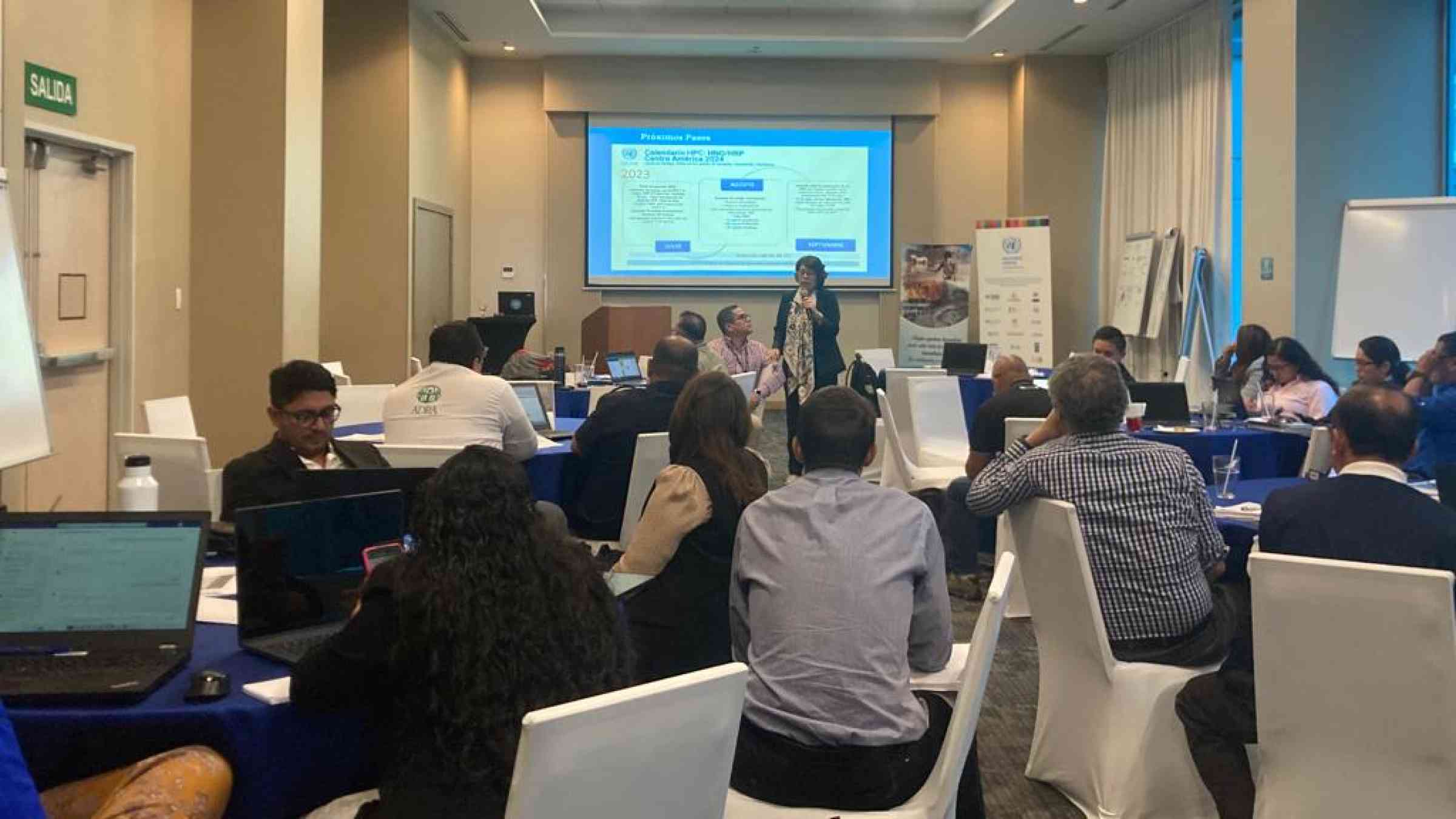Unpacking risks for humanitarian planning in Central America

Central America, a region already grappling with a multitude of hazards, has found itself at the crossroads of an unprecedented convergence of challenges. From the remote communities to the bustling cities in Guatemala, El Salvador, and Honduras, the people are facing a perfect storm of adversities that demand a comprehensive understanding of risk.
Understanding risk is not a mere intellectual exercise; it's a lifeline for the vulnerable populations suffering the brunt of natural hazards, economic instability, and societal issues. This region is no stranger to the forces of nature, experiencing droughts and flooding, seismic activities, and hurricanes with alarming regularity. These environmental scenarios are further compounded by the rising costs of living, inflation, and a dire lack of basic services.
Agriculture, the backbone of many Central American economies, is facing the heat of this crisis. Livelihoods dependent on agriculture are becoming increasingly unsustainable, driving countless individuals and families to migrate in search of better opportunities and safety.
Adding to this complex mix is the relentless flow of people transiting through Central America, aspiring to build a better life up north. This migration phenomenon has created its own set of challenges, placing additional strain on local resources and services. Transnational crime, both a consequence and a cause of the migration issue, compounds the region's difficulties.
Recognizing the urgency of addressing these multidimensional and cascading risks, the United Nations Office for Disaster Risk Reduction (UNDRR) has joined forces with the UN Office for the Coordination of Humanitarian Affairs (UNOCHA) and humanitarian and development organizations. Their collective goal: to unravel the complexities of risk in Central America.
Over 120 partners from government bodies, NGOs, and the United Nations came together in a series of workshops held in Guatemala City, San Salvador, and Tegucigalpa. These workshops marked a significant step towards jointly analyzing risk and developing a most-likely scenario to guide humanitarian planning and disaster risk reduction efforts.
The collaborative analysis and scenario development aimed to shed light on various critical aspects:
- Climate Change: Central America's vulnerability to droughts and excess rainfall is exacerbated by climate change, further threatening agricultural productivity.
- Migration Impact: The influx of migrants is straining local services, raising concerns about adequate provision for both residents and newcomers.
- Government Services: The limited reach of government services is a driving factor behind vulnerability, particularly in remote areas.
- Economic Shocks: Economic shocks are eroding the resilience of farming communities and vulnerable populations.
- Protection Gaps: Vulnerable groups, including women, children, the elderly, and people with disabilities, often lack the necessary protection and support.
A path forward
Bringing partners together from diverse sectors and backgrounds to jointly analyze the evidence base and agree on a likely scenario holds the promise of improved planning and programming. By incorporating risk considerations from the outset, investments can become more sustainable, offering a chance for the most vulnerable to break free from the vicious cycle of repeated and compounding shocks.
This critical work in Central America is funded by the German Federal Foreign Office (FFO) and USAID's Bureau for Humanitarian Assistance, with contributions from the Swiss Agency for Development and Cooperation (SDC) and the Directorate-General for European Civil Protection and Humanitarian Aid Operations. Its impact extends beyond humanitarian planning, strengthening the Humanitarian Programme Cycle approach and informing the Humanitarian Response Plan. Additionally, the analysis conducted in Central America serves as a model that can be adapted for development planning across the humanitarian-development nexus.
The Risk Information Exchange (RiX) plays a pivotal role in providing access to the evidence base used for this analysis. While RiX has been instrumental, the focus is shifting towards "strengthening access to and understanding of risk information" to maximize its impact.
Central America is not alone in facing these challenges. Similar workshops have been conducted in other regions, such as South Sudan, Somalia, Niger, and Sudan, showcasing the global importance of understanding and mitigating risks for effective humanitarian planning.
The collaborative effort to understand and address multi-dimensional and cascading risks in Central America is a beacon of hope for vulnerable communities in the region. By bringing together a diverse group of stakeholders, this initiative is poised to revolutionize humanitarian planning, making investments more sustainable and breaking the cycle of eroding resilience caused by repeated and compounding shocks. As the world grapples with an ever-evolving landscape of challenges, Central America stands as an example of proactive, cooperative risk analysis and planning that can pave the way for a more resilient future.